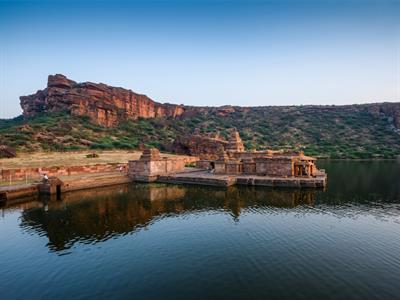
PUMPA - SMART LEARNING
எங்கள் ஆசிரியர்களுடன் 1-ஆன்-1 ஆலோசனை நேரத்தைப் பெறுங்கள். டாப்பர் ஆவதற்கு நாங்கள் பயிற்சி அளிப்போம்
Book Free DemoThe first Chalukyas, whose capital was Badami (Vatapi) in Karnataka, ruled from the mid-sixth century until its greatest monarch, Pulakesin II, died in 642 AD.
Around 543 AD, Pulakesin I, a minor chieftain from Pattadakal in Bijapur, captured and fortified the hill fort of Vatapi (CE). He quickly took control of the area between the Krishna and Tungabhadra rivers and the Western Ghats.
His son Kirtivarman I (566–597) AD conquered the Konkan coast for the Chalukyas. Pulakesin II (c. 610 – 642) became the dynasty's most powerful ruler. Khusru II, the Persian (Iran) king, despatched an envoy to Pulakesin II's court. Pulakesin was able to take control of sections of Gujarat and Malwa.
He defied the North Indian emperor Harsha, and the Narmada River was agreed upon as the border between the two. Pulakesin II captured Vengi and gave it to his brother Vishnuvardhana, the first Eastern Chalukya emperor, in the year 624.
The Pallavas raided the Deccan and seized Vatapi between 641 CE and 647 CE, but the Chalukyas reclaimed it by 655 CE. Vikramaditya I (655–680) CE and Vikramaditya II, Vikramaditya I's successor, conquered Kanchipuram but spared the city. Dantidurga, the founder of the Rashtrakuta dynasty, beat Kirtivarman II, Vikramaditya II's successor.
Western Chalukyas of Kalyani:
They were Badami Chalukya descendants who reigned from Kalyani (modernday Basavakalyan). Tailapa II, a Rashtrakuta feudatory ruled from Bijapur, conquered Parmara of Malwa in 973 CE. Tailapa II seized Kalyani, and under Somesvara I, his dynasty swiftly expanded into an empire. The capital was transferred from Manyakheta to Kalyani by Somesvara I.
The two southern Indian empires, the Western Chalukyas and the Chola dynasty of Thanjavur, fought numerous challenging conflicts for control of the fertile Vengi region for nearly a century. Vast regions between the Narmada River in the north and the Kaveri River in the south came under Chalukya dominion during the reign of Vikramaditya VI in the late \text{11th century}.
Contributions to Art and Architecture
The Chalukyas made significant contributions to art and architecture as followers of both Saivism and Vaishnavism. Vesara is a new architectural style that was created. Vesara is a hybrid of Dravida (South India) and Nagara (North India) architectural styles.
They refined the art of stone construction without the use of mortar. Soft sandstones were employed in the construction. They constructed various cave temples and structured temples dedicated to Siva, Vishnu, and Brahma. Chalukya temples can be found at Aihole, Badami, and Pattadakal.
Stone temples:
As we know, the Vishnu temples at Badami and Aihole and the Virupaksha or Siva Temple at Pattadakal in present-day Karnataka are famous stone temples. The Aihole inscription of Vikramaditya II may be found in the Vishnu temple at Badami, which Mangalesa of the Chalukya Dynasty built.
Cave temples:
Ajanta, Ellora, and Nasik are the locations of their cave temples. Fine sculptures of Vishnu reclining on Sesha Nag, Varaha, the Boar, Narasimha, the Lion-Faced Man, and Vamana, the dwarf, can be found in the cave temples of Badami.

Badami Cave temples on Agastya Tirtha Lake, Karnataka, India
The Kasi Vishweshvara Temple in Lakkundi, the Mallikarjuna Temple in Kuruvatti, the Kalleshwara Temple in Bagali, and the Mahadeva Temple in Itagi are all famous examples of Western Chalukya architecture.
In painting, the Chalukyas embraced the Vakataka style. During the era of the Chalukyas, some of the frescoes in the Ajantha caves were produced. Pulakesin II's welcoming of the Persian ambassadors is shown in an Ajanta painting. Chalukya dynasty reigned. Pulakesin II's welcoming of the Persian ambassadors is shown in an Ajanta painting.
Reference:
Agastya Tirtha lake at Badami: ImageofIndia / Shutterstock